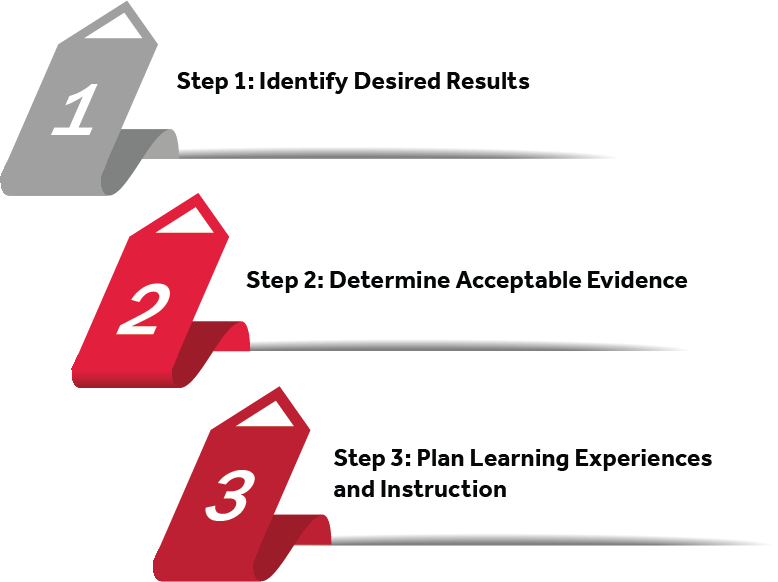Course Design Process 101
Educators typically approach course design in a “forward design” manner. They consider how to teach the content first, develop assessments around their learning activities, then attempt to draw connections to the learning objectives of the course.
In contrast, the backward design approach asks educators to consider the learning objectives of the course first. For this reason, backward design is considered an intentional approach to course design than traditional methods of design.
Backward Design Framework- Begin With the End in Mind
There are many course design frameworks to choose from when designing or redesigning a course. Backward Design is a popular framework from the book Understanding by Design by Grant Wiggins and Jay McTighe.
The backward design framework begins with the end in mind and includes 3 steps:
- Identifying what you want students learn or be able to do. In this step you curate and develop the learning objectives.
- Determining acceptable evidence. These are the assessments students will complete to demonstrate they have met the learning objectives.
- Planning learning experiences and instruction. In this step, you develop your instructional activities, choose resources and provide opportunities for students to practice what they learned.

Backwards Design- Step by Step
*Backward Design Video Designed and created in Camtasia by Tina Fox; Written and Narrated by Jerod Quinn
Course Alignment Map
The following template walks your through each step of the backward design framework. Below you will find a link to download the template with descriptions to guide you through through aligning your student learning objectives, assessments and instructional activities.
Need More Guidance? Feel free to also reach out to the CELT at celt@stonybrook.edu to schedule a consultation with an instructional designer.

